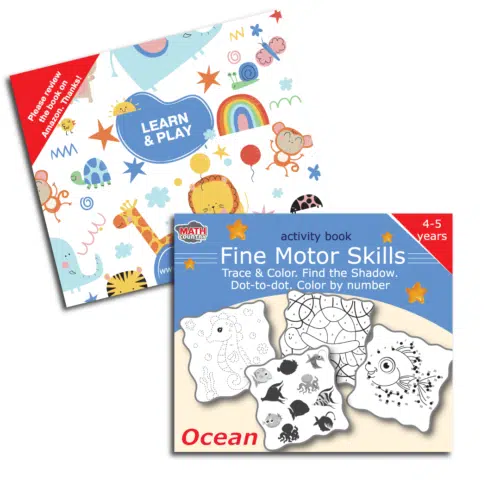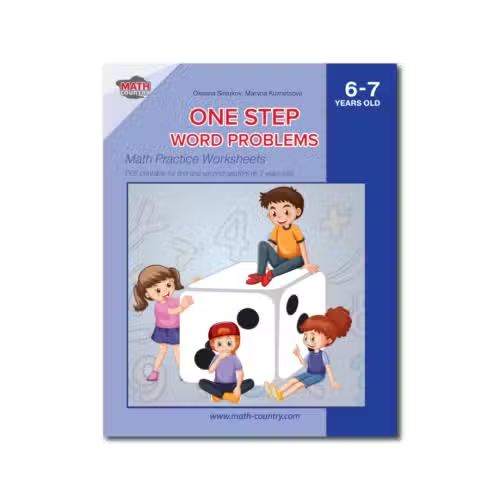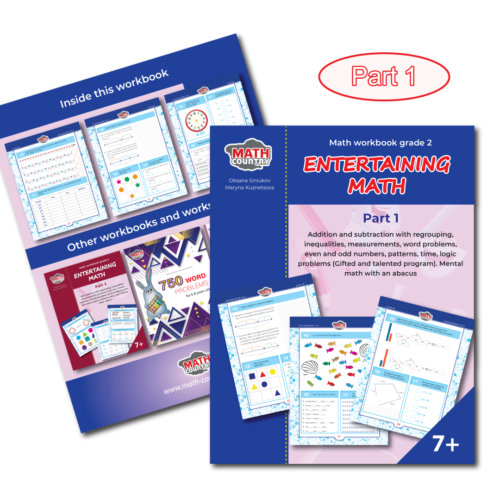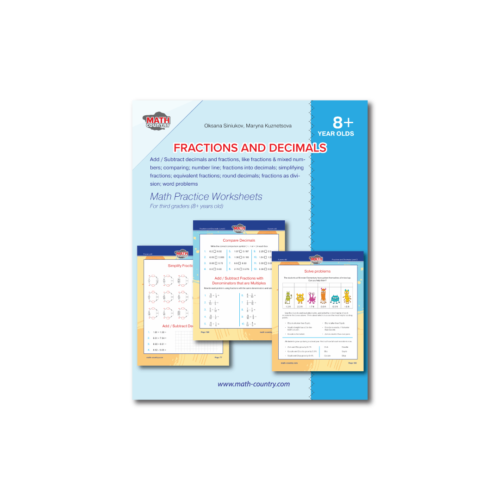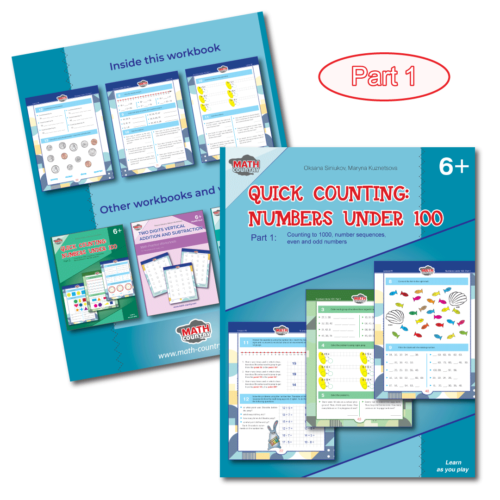Kindergartens (age 5+)
What Workbook Does My Child Need?
| Main Workbooks | Additional Topic-related Worksheets | |
|---|---|---|
| Step 1 | Learn to Count. Part 1 | Addition and Subtraction (5+) |
| Step 2 | Learn to Count. Part 3 | Skip-counting (5+) |
| Step 3 | Learn to Count. Part 5 | Logic Problems (5+) |
There are three ways to choose the correct set of workbooks for a kindergarten
I. Testing
The easiest way is to test the child and get a detailed report with recommended workbooks.
Our tests cover all the topics that five-year-olds must master, and the detailed report shows how the child performs in each of these topics. If the child’s result is lower than 85%, the report includes recommendations of workbooks to improve the child’s knowledge and math skills.
We recommend starting at the Beginner level, and if the child performs well, move to the next level.
The testing can be done at home, and the detailed report can be downloaded and/or printed.
II. Classical “step-by-step” learning
This method suits children who have just started a new school year and must learn new concepts and follow the school curricula.
We recommend starting with the first workbook from the “Learn to count” set and using our topic-organized worksheets in addition to each main workbook.
The constant topic rotation keeps children’s attention during the lesson, minimizes the chances of forgetting some of the topics, and allows them to focus on the skills that require additional attention.
The list below contains recommendations on the main workbooks and additional worksheets.
1st step:
- Learn to Count. Part 1
- Addition and Subtraction (age 5+)
- Numbers on a Number Line (age 5+)
2nd step:
- Learn to Count. Part 2
- Number Bonds. Equations (age 5+)
- Skip-Counting (age 5+)
3rd step:
- Learn to Count. Part 3
- Compare Objects and Numbers. Inequalities (age 5+)
- Logic Problems (age 5+)
4th step:
5th step:
- Learn to Count. Part 5
- Money (age 5+)
6th step:
- Learn to Count. Part 6
- Time and Clock (age 5+)
III. Topic-related learning
If you know that the child requires additional practice in some topics, you can choose this way of learning.
Below you can find the list of the main concepts that five-year-olds must master and recommended worksheets for each of the concepts.
